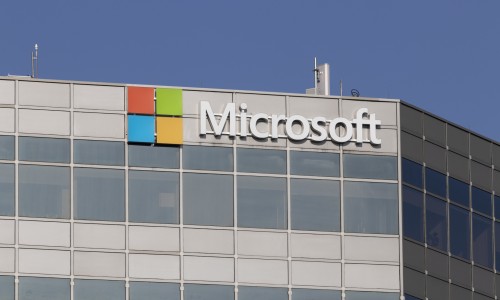
What Is Software as a Service in Cloud Computing?
26 September 2022
The software as a service industry is booming!
An increasing number of businesses are adopting the SaaS model, owing to the many benefits it brings along. Currently the UK has 2,000 SaaS companies, ranking only second to the United States, and the number is growing.
And for a good reason.
Business applications delivered via SaaS boast pain-free installation and are cost-effective compared to on-premise software. SaaS is also more scalable, easier to set up, more secure, and accessible from anywhere.
Yet, many businesses are still relying on on-premise software and legacy systems that are risky from a security standpoint. Here, we’ll introduce you to the software as a service business model and explain why it could work for your business.
What Is Software as a Service?
Software as a service, commonly known as SaaS, is a software delivery method that allows data to be accessed from any device over an internet connection.
Simply put, SaaS is a software distribution model that gives customers access to software over the internet rather than requiring custom installation.
In this business model, software vendors host the servers, code, and databases that make up the application. This way, the source code is the same for all end users, and as new features are rolled out, they are automatically available to all users too.
With SaaS, the client doesn’t control or manage the underlying infrastructure, including servers, storage, operating systems, and servers. The entire infrastructure is owned and managed by the vendor.
Using SaaS is like renting a car; instead of buying the car directly, you pay per day or mile driven. On top of this, you don’t have to worry about maintenance or any cost associated with the use of the car (repair, insurance, etc.).
SaaS has truly revolutionized the software distribution space. In the past, introducing a new application was a hectic process.
From the complex on-site installation to custom development to training—it could easily take weeks before the software was fully installed and ready for use. With SaaS, this could happen in a matter of days or even less.
SaaS vs. On-Premise: How Do You Choose?
Whether you’re a budding startup or an established company, choosing the right software for your business can be challenging. For many, one of the toughest decisions they have to make is to choose whether to go with SaaS or on-premise software.
The traditional on-premise software differs from SaaS in two ways:
Hardware Requirements
On-premise software requires investment in hardware resources and a lot of time in installing the software on the business premises. SaaS deployments, on the other hand, don’t require extensive hardware, making it a more cost-effective option.
Payment Methods
On-premise software is usually purchased via a license and paid upfront. Additionally, on- premise users can pay as much as 20% per year in maintenance and support costs. SaaS products, on the other hand, are typically paid within a subscription model.
So, which is the better option?
SaaS allows all operations, large or small, to reap the full benefits and efficiencies of
a multitude of digital applications – from next generation cyber security to automated email marketing services.
And in a tech-centric world where the internet is the new currency and data drives business decisions, you’ll want a strong online presence to remain relevant. With SaaS, you benefit from simple implementation, lower costs, scalability, data security, and access with no restrictions.
SaaS vs. IaaS: What’s the Difference?
SaaS, IaaS, and PaaS are closely related but don’t mean the same thing. Let’s briefly define these terms and their scope to enumerate their differences.
Software as a service is a way of delivering applications over the internet.
SaaS is fully provided by the vendor—from the software, storage, operating systems, and
everything in between.
Infrastructure as a service, or IaaS, is a cloud computing service that offers essential storage, compute, and networking resources on demand, on a pay-as-you-go basis.
Creating an IT infrastructure is an expensive and labor-intensive endeavor, often requiring significant investment in equipment and skilled labor to install and maintain. Thanks to IaaS, this will never be a concern to you.
Their differences?
IaaS gives access to resources like virtual storage and virtual machines and SaaS gives access to the end user.
What are the Benefits of SaaS?
As mentioned, adopting a SaaS model can bring a ton of benefits to your business. We’ll briefly discuss the top 5 benefits of SaaS in this section.
- Lower Costs – One of the top benefits of SaaS is cost savings. You don’t need to invest in any additional hardware with SaaS. You can invest the money you have saved in other productive areas of your business while deploying a full-functional business application
- Scalability – With a SaaS, you can choose your business software and alter it when necessary. You don’t have to worry about capacity when your business grows. Adopting SaaS allows you to add users as needed without worrying about acquiring new hardware. Clients can get additional bandwidth with just one click. You can add new users with just a few clicks when new users are required. All they need to need is to register into the platform with a new username and password
- Accessibility – Because SaaS products don’t need to be run on specific computers or from a particular office, they are highly accessible to all employees. Users can access them from any device and from anywhere. The only requirement is an internet connection for employees to access these applications
- Data Security – While security has traditionally been cited as one of the drawbacks of the cloud, much has changed in this department over the years. Today, specialized, secure data centers are available where cloud applications are hosted. These data centers employ the latest technology that’s constantly updated to meet the highest security standards and thwart any cybersecurity threats
- Increased Customer Loyalty – SaaS products offer several tools to boost customer loyalty. This includes the ability to earn discounts, contests, gifts, etc. SaaS apps also allow for built-in communication between businesses and their customers. The ongoing communications can enable businesses to build rapport with the client, while providing quality services that will keep the client engaged for longer periods
- Saving and Storage – On-premise data storage is expensive and hectic—organisations must invest in reliable backups and other disaster recovery plans to mitigate serious hardware crash that might lead to the loss of important business data. However, this is unnecessary with SaaS as all data is stored in the cloud. This saves the company money and time and is also advantageous to your employees. Employees can easily switch between devices without losing work or data by simply logging in to their user accounts, regardless of the devices used
Summing Up
Software as a service, or SaaS, is a software distribution model that gives customers access to software over the internet, rather than requiring custom installation.
Traditional on-premise software differs from SaaS in that it requires investment in hardware and a lot of time in installing the software. SaaS deployments, on the other hand, don’t need additional hardware.
Moreover, on-premise software is usually purchased via a license, while SaaS products are typically paid within a subscription model. Adopting the SaaS model brings many benefits to businesses, including lower costs, ease of access, and increased customer loyalty.
ICT Solutions can help
If you’d like to find out more about our managed IT services in Liverpool and the UK, we’d love to hear from you.
Just tell us what you need, and our team of dedicated and knowledgeable experts can guide you towards the perfect solution to revolutionise your business.



